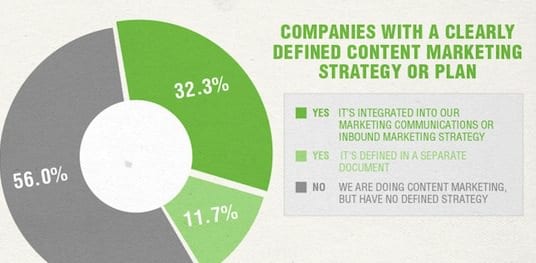4 essential steps for planning content marketing
 Content marketing is now seen by many as an essential part of the overall marketing strategy of any business. Ignoring content marketing is equivalent to choosing not to engage with a large section of the customer base. This just goes to show how important content marketing can be. So much so that many companies now rely solely on content marketing and related tactics like SEO and social media marketing to get the word out.
Content marketing is now seen by many as an essential part of the overall marketing strategy of any business. Ignoring content marketing is equivalent to choosing not to engage with a large section of the customer base. This just goes to show how important content marketing can be. So much so that many companies now rely solely on content marketing and related tactics like SEO and social media marketing to get the word out.
However, there are many companies that get content marketing wrong. Months and even years of blood, sweat and tears and a lot of money gets them nowhere. Their content goes unnoticed, there are no new leads generated, there is no increase in the volume of web traffic and barely any customer interaction.
One of the main reasons why content marketing fails for many companies is because they have no content marketing strategy. Without a strategy, content marketing can be haphazard and vague.
As the recent Hubspot-Smart Insights research showed as summarised in our Managing content marketing infographic, many business don't have a defined content marketing plan.

Here are four simple steps we use when working with companies that are new to content marketing to help plan a strategy:
First and foremost, you need to figure out why you want to start content marketing. There is no point in progressing if you don’t know why you want to market content in the first place.
The most common content marketing goals include to attract more web traffic, to get more engagement on social media campaigns, to increase conversion rates, etc.
Figure out the goals for your company and write them down. This will make sure that everyone in the content marketing team is on board with your plan and know exactly what to aim for. As part of this you need to ensure you set up goals in Google Analytics and dashboards to help you report on content marketing.
After you have set your goals, you need to figure out how to measure the success of your content marketing campaigns. How will you know if your investment in content marketing is worth it if you don’t have hard data on results?
There are various metrics available that are easy to track and give a clear picture of what are the best and worst parts of your content marketing campaigns. This post defines content marketing KPIs and this post shows how to use Google Analytics to review content marketing campaigns.
Setting milestones and figuring out which metrics to track will help you change your campaigns for the better. You need to track these metrics and measure milestones frequently. Based on the results, you will have to change your content marketing strategy periodically to get maximum benefits.
-
3. Define your ideal audience
Who are you writing and publishing the content for? What do you want your customer base and audience to look like?
You need to answer these questions before starting content marketing. If you do not know who you are catering to, why bother writing at all. Define age groups, gender, income status, education status, geographical boundaries, interests, etc. of the people you hope to attract. Summarise them in realistic customer personas which highlight which content types will appeal to each persona.
Figuring out the demographics you want to target helps you set the tone and style of your content.
For example, of you want to target young mothers, you can create a persona that is a young mother of 25 years of age who has one small baby daughter and you can even give her a name and list down her various interests. This will keep content consistent and relevant.
-
4. Create calls to action
A call to action is one of the most important components of a piece of content, I mention since it is often missing, in an infographic for instance. A call to action tells your reader what to do next. Including a simple call to action can increase conversion rates and customer engagement.
Create interesting, innovative and simple calls to action that you want to include in your content and in pages where they are embedded. While creating the content marketing strategy, you also need to define clearly where you want to place these calls to action in your content.

Thanks to Dave Ken for sharing his thoughts and opinions in this blog post. Dave is a
Digital Marketing Strategist in
IBOXSEO and has worked with firms in the UK, Ireland, and HK on growing their online presence via lean strategy. Hugely passionate about the evolving nature of SEO and is always interested in the latest shifts and patterns, particularly related to content marketing. Follow him on Twitter
@DaveKen001 and
Google+




 Thanks to Dave Ken for sharing his thoughts and opinions in this blog post. Dave is a Digital Marketing Strategist in
Thanks to Dave Ken for sharing his thoughts and opinions in this blog post. Dave is a Digital Marketing Strategist in 

